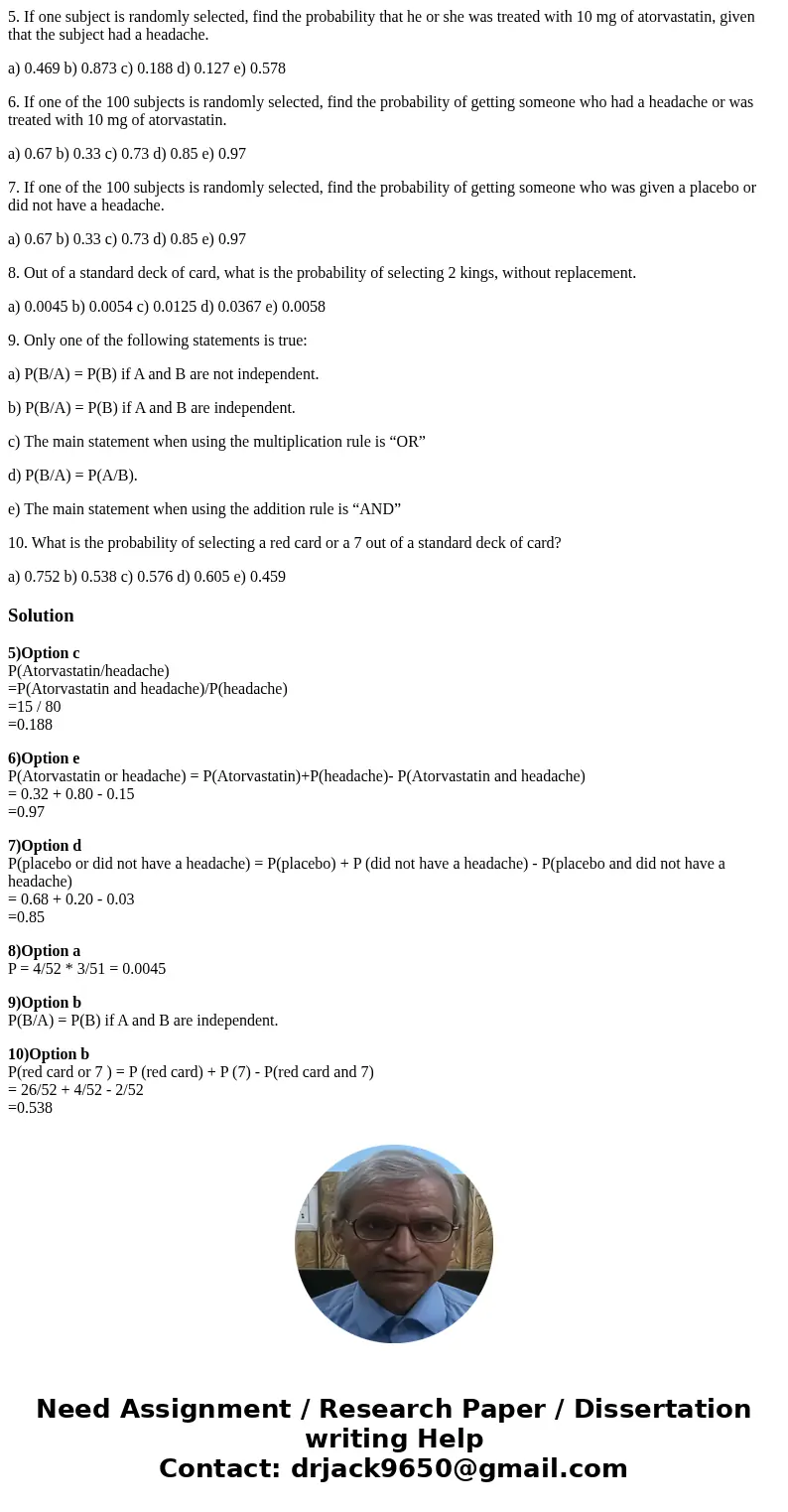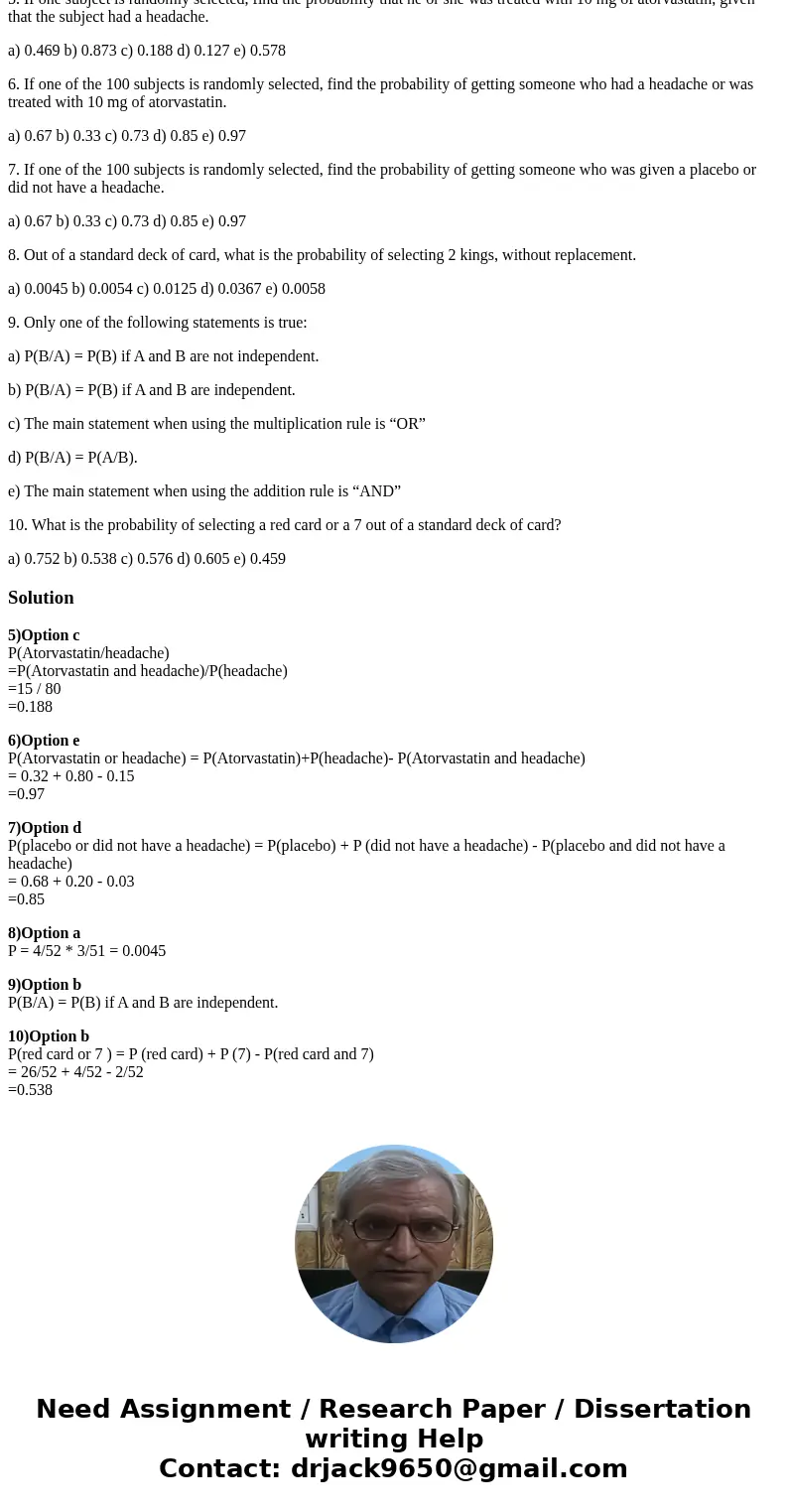5 If one subject is randomly selected find the probability t
5. If one subject is randomly selected, find the probability that he or she was treated with 10 mg of atorvastatin, given that the subject had a headache.
a) 0.469 b) 0.873 c) 0.188 d) 0.127 e) 0.578
6. If one of the 100 subjects is randomly selected, find the probability of getting someone who had a headache or was treated with 10 mg of atorvastatin.
a) 0.67 b) 0.33 c) 0.73 d) 0.85 e) 0.97
7. If one of the 100 subjects is randomly selected, find the probability of getting someone who was given a placebo or did not have a headache.
a) 0.67 b) 0.33 c) 0.73 d) 0.85 e) 0.97
8. Out of a standard deck of card, what is the probability of selecting 2 kings, without replacement.
a) 0.0045 b) 0.0054 c) 0.0125 d) 0.0367 e) 0.0058
9. Only one of the following statements is true:
a) P(B/A) = P(B) if A and B are not independent.
b) P(B/A) = P(B) if A and B are independent.
c) The main statement when using the multiplication rule is “OR”
d) P(B/A) = P(A/B).
e) The main statement when using the addition rule is “AND”
10. What is the probability of selecting a red card or a 7 out of a standard deck of card?
a) 0.752 b) 0.538 c) 0.576 d) 0.605 e) 0.459
Solution
5)Option c
P(Atorvastatin/headache)
=P(Atorvastatin and headache)/P(headache)
=15 / 80
=0.188
6)Option e
P(Atorvastatin or headache) = P(Atorvastatin)+P(headache)- P(Atorvastatin and headache)
= 0.32 + 0.80 - 0.15
=0.97
7)Option d
P(placebo or did not have a headache) = P(placebo) + P (did not have a headache) - P(placebo and did not have a headache)
= 0.68 + 0.20 - 0.03
=0.85
8)Option a
P = 4/52 * 3/51 = 0.0045
9)Option b
P(B/A) = P(B) if A and B are independent.
10)Option b
P(red card or 7 ) = P (red card) + P (7) - P(red card and 7)
= 26/52 + 4/52 - 2/52
=0.538


 Homework Sourse
Homework Sourse